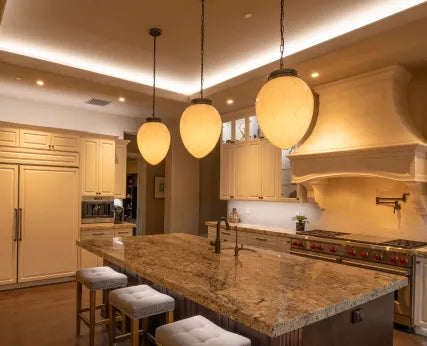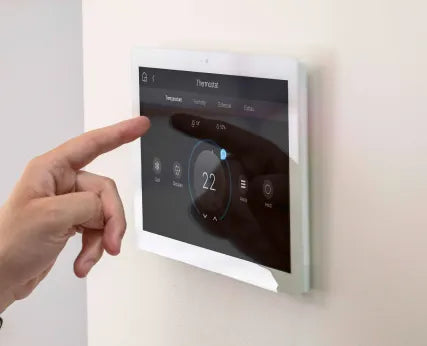From Smart Home to Intelligent Living: Creating Your Personalized Automated Home
Imagine this scenario: On your way home, your smart thermostat has already adjusted to your favorite temperature. As you walk in, the smart lighting gently turns on to welcome you. With a simple “I’m home,” your music starts playing and the curtains automatically close. This isn’t a scene from a futuristic movie—it’s the reality of home automation you can achieve today.
The “smart home” has evolved from a collection of smart devices into a holistic, integrated ecosystem. It’s no longer just about remote control—it’s about your home predicting your needs and taking proactive actions. But what sets a truly automated home apart from a house simply filled with gadgets?
The answer lies in integration and intelligence. A true home automation system enables all your devices to work together, creating a seamless, convenient, and efficient living experience. This guide will show you how to upgrade your house from simply “connected” to genuinely “smart,” making your life easier, safer, and more energy efficient.
What Is Home Automation and How Does It Work?
Home automation—or the smart home—refers to connecting all your household devices and systems into a central network, enabling them to communicate and act automatically based on preset rules, schedules, or real-time data.
At the heart of this system is the home hub and communication protocols such as Zigbee, Z-Wave, and the emerging Matter standard. These technologies create a reliable network so different devices—lights, locks, thermostats, and cameras—work together smoothly.
Unlike manually adjusting each device, home automation can:
- Use occupancy sensors or geofencing (your phone’s location) to determine if you’re home.
- Execute scenes or routines—for example, a “Good Night” scene can turn off all lights, lock doors, and set the thermostat with one tap.
- Respond to voice control assistants like Alexa or Google Assistant.
- Proactively manage energy efficiency by powering down devices you’re not using.
In short, it transforms your home into an attentive partner that thinks and acts for your comfort.
Core Benefits of Home Automation
Upgrading your house to an automated home offers much more than just convenience. It delivers real, lasting value for homeowners and property managers alike.
- Unmatched Comfort & Convenience: Automation takes care of everyday routine tasks so you have more time to enjoy life.
- Significant Energy Savings: Through intelligent management of lighting, heating, and cooling, the system cuts energy bills—especially during peak pricing periods.
- Enhanced Home Security: Integrated smart locks, smart cameras, and sensors form a proactive home security network, sending alerts the moment a potential threat is detected.
- Improved Quality of Life: From better indoor air quality to immersive whole-home audio, automation elevates every aspect of living.
- Care and Accessibility: For seniors or those with mobility challenges, features like voice control and automated lighting mean enhanced independence and safety.
Key Components of a Home Automation System
A robust home automation system relies on several essential building blocks:
- Home Hub & Protocols: Think of this as the brain. The hub coordinates all devices, while protocols like Zigbee, Z-Wave, Wi-Fi, and Matter are the languages devices use to communicate.
- Reliable Network: Solid, fast Wi-Fi is the backbone ensuring all wireless smart devices work seamlessly.
- Smart Devices: These are the “hands and feet” of your system, including:
-
- Smart Lighting: Controls brightness, color, and schedules.
- Smart Thermostats: Optimizes heating and cooling.
- Smart Locks & Doorbells: Remotely manage entry and view visitors.
- Smart Cameras: Deliver real-time surveillance and intelligent alerts.
- Smart Curtains/Blinds: Open and close automatically based on time or sunlight.
- Sensors: Detect motion, door/window status, leaks, and smoke.
Top Use Cases: Automation in Everyday Life
The true magic of home automation lies in how it adapts to every facet of your lifestyle.
Comfort & Convenience
Picture a “Good Morning” scene: Curtains gently rise 15 minutes before you wake, the thermostat turns up the heat, your coffee maker starts, and news begins to play on your smart speaker.
Security & Safety
When you leave home, the system automatically locks doors, arms the security system, and turns off unnecessary lights. If a smart camera detects unusual activity, you get an instant alert—and all lights turn on to deter intruders.
Energy Management
The system intelligently adjusts energy use based on your presence, the time of day, or real-time electricity prices. For instance, it dims lights during peak pricing or schedules EV charging for off-peak hours.
Entertainment
Activate “Movie Night” to dim the lights, lower the projector screen, and start the sound system with a single command. A whole-home audio system lets you enjoy music that follows you from room to room.
Interactive Prompt: Which automation scene are you most excited to add at home—an “Away Mode” for security, or an immersive “Movie Night”?
Deep Dive: Core Features Explained
- Voice Control: The easiest and most natural way to interact with your system. Simple voice commands control single devices or entire scenes.
- Routines & Scenes: The heart of automation. Create custom routines so sequences of actions trigger based on set conditions—time, sensor states, or your location.
- Presence Detection: Using occupancy sensors and geofencing to know if you’re home—and in which room—allows smarter decisions.
- Scheduling: Automate daily activities like watering your garden with a smart irrigation system.
- Unified Dashboard: Monitor and control everything via a mobile app or wall-mounted touchscreen.
Integration & Interoperability: Making Everything Work Together
In the past, devices from different brands rarely talked to each other. That’s changing, fast.
- Matter: Emerging as the universal industry standard, Matter ensures devices from different brands work together out of the box, making expansion and setup much simpler.
- Zigbee/Z-Wave: Mature, low-power protocols for smart home devices—excellent for building stable mesh networks.
- Wi-Fi: Many devices connect directly to your Wi-Fi; it’s simple to install, but too many Wi-Fi devices can strain your network.
Pro Tip: When building your system, choose a home hub that supports multiple protocols (especially Matter). This maximizes future compatibility.
Data Privacy & Cybersecurity: Protecting Your Smart Home
As homes become more connected, protecting your data and privacy is critical.
- Change Default Passwords: This fundamental step secures all your connected devices.
- Enable Two-Factor Authentication: Add an extra layer of protection to your main accounts.
- Create a Separate Device Network: Think about putting all your smart devices on a dedicated guest Wi-Fi network—this isolates them from your main network where your personal data lives.
- Keep Firmware Updated: Manufacturers push updates to patch security vulnerabilities. Ensure all devices run the latest software.
Checklist: Review your current smart devices and make sure each one uses a unique, strong password.
The Future of Home Automation
Home automation technology is advancing rapidly:
- Edge AI: More smart decisions are made on the device itself (not just the cloud), allowing for faster responses and improved privacy.
- Predictive Maintenance: Your home will soon notify you when it’s time to change air filters or alert you to a water heater issue before it fails.
- Energy Orchestration: Systems will coordinate with the electrical grid, solar panels, home batteries, and EV chargers to optimize when and how energy is generated, stored, and used.
- Digital Twins: Your home will have a virtual version in the cloud to simulate and optimize automation strategies before implementing them in real life.
Partner with Linko Smart Technology
Designing and installing a seamless, reliable, and secure home automation system requires expertise. From network planning and device selection to complex scene programming, every step is crucial.
At Linko Smart Technology, we’re end-to-end smart home solution specialists. We start by understanding your lifestyle and needs, design a customized system, provide expert installation and configuration, and make sure you enjoy all the convenience that smart living brings.
Ready to transform your house into a truly intelligent companion? Contact Linko Smart Technology today for a free consultation or to start planning your automated home project.
Frequently Asked Questions (FAQ)
1. How much does it cost to deploy a complete home automation system?
Costs vary greatly depending on your home’s size, the number and brand of devices, and project complexity. You can start with a single room or function (like smart lighting) and expand gradually.
2. Can I automate my old house?
Absolutely. There are plenty of wireless devices and solutions designed specifically for retrofitting existing homes—with no major rewiring needed.
3. How long does installation take?
A simple system (thermostat and a few lights) may take just a few hours. A whole-home automation project could take several days depending on scale and complexity.
4. What kind of maintenance do I need?
Most modern smart home devices require little to no physical upkeep. The main task is keeping software and firmware updated—which can usually be done automatically through an app.
5. DIY vs. professional installation—which is best?
For tech enthusiasts adding a few independent devices, DIY works well. But for a fully integrated, reliable system where everything works together, we highly recommend professional installation. Experts ensure robust networks, device compatibility, and can program complex automation scenes.
6. Is my personal data and privacy safe?
We put your privacy first. We only recommend reputable brands with strong cybersecurity features and transparent privacy policies. Professional installation also includes steps to protect your system from unauthorized access.




